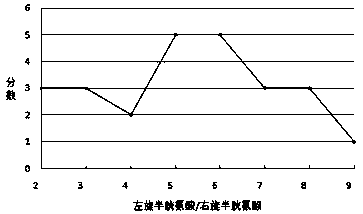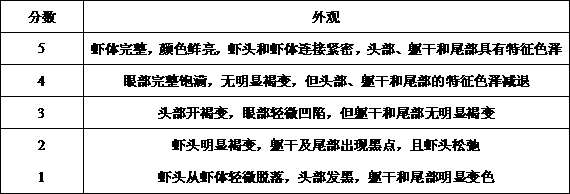Polyphenol oxidase passivation method based on dielectric barrier discharge low-temperature plasma
A low-temperature plasma, dielectric barrier discharge technology, applied in the direction of food electrical treatment, the function of food ingredients, preservation of meat/fish with chemicals, etc. Reduce the activity of polyphenol oxidase, etc., to achieve the effect of stable colorless substances, low cost, and inhibition of blackening
- Summary
- Abstract
- Description
- Claims
- Application Information
AI Technical Summary
Problems solved by technology
Method used
Image
Examples
Embodiment 1
[0013] A method for passivation of polyphenol oxidase based on dielectric barrier discharge low-temperature plasma, including the following steps: first, dielectric barrier discharge low-temperature plasma treatment, the treatment voltage is 55kV, and the time is 60s; then the preparation of inhibitors: take 20 Mix parts of phytic acid, 4 parts of ethylenediaminetetraacetic acid, 5 parts of carboxylic acid dibasic ester and 35 parts of water, then add 0.3 part of pentaerythritol and 0.1 part of benzyl benzoate, stir for 10 minutes, and then add 15 parts of cysteine, Mix for 3 minutes under the ultrasonic power of 300W to obtain the inhibitor. The ratio of L-cysteine to D-cysteine in the added cysteine is 5 / 1; the last is the inhibitor passivation: take 9 Add 55 parts of inhibitor to the shrimp that has undergone plasma treatment, and soak for 20 minutes. Plasma contains electrons, ions, excited state atoms, metastable atoms, free radicals and other highly active substance...
Embodiment 2
[0015] A method for passivation of polyphenol oxidase based on dielectric barrier discharge low-temperature plasma, including the following steps:
[0016] 1) Dielectric barrier discharge low-temperature plasma treatment: The dielectric barrier discharge low-temperature plasma is applied to the treatment of shrimp, the treatment voltage is 60kV, and the time is 70s;
[0017] 2) Preparation of inhibitor: Add 25 parts of phytic acid, 6 parts of ethylenediaminetetraacetic acid, 6 parts of carboxylic acid dibasic ester and 45 parts of water to the container and mix, then add 0.7 parts of pentaerythritol and 0.2 parts of benzyl benzoate, Stir at 180r / min for 15min, then add 18 parts of cysteine, and mix for 6min under the ultrasonic power of 320W to obtain inhibitor. Among the added cysteine, L-cysteine and D-half The ratio of cystine is 6 / 1. The raw materials are low in cost, safe and non-toxic to the human body. The prepared inhibitor can effectively inhibit the activity of polyphe...
Embodiment 3
[0020] A method for passivation of polyphenol oxidase based on dielectric barrier discharge low-temperature plasma. The steps are as follows: Compared with Example 2, the inhibitor of this example does not contain pentaerythritol and benzyl benzoate, and other conditions are the same.
PUM
 Login to View More
Login to View More Abstract
Description
Claims
Application Information
 Login to View More
Login to View More - R&D
- Intellectual Property
- Life Sciences
- Materials
- Tech Scout
- Unparalleled Data Quality
- Higher Quality Content
- 60% Fewer Hallucinations
Browse by: Latest US Patents, China's latest patents, Technical Efficacy Thesaurus, Application Domain, Technology Topic, Popular Technical Reports.
© 2025 PatSnap. All rights reserved.Legal|Privacy policy|Modern Slavery Act Transparency Statement|Sitemap|About US| Contact US: help@patsnap.com



